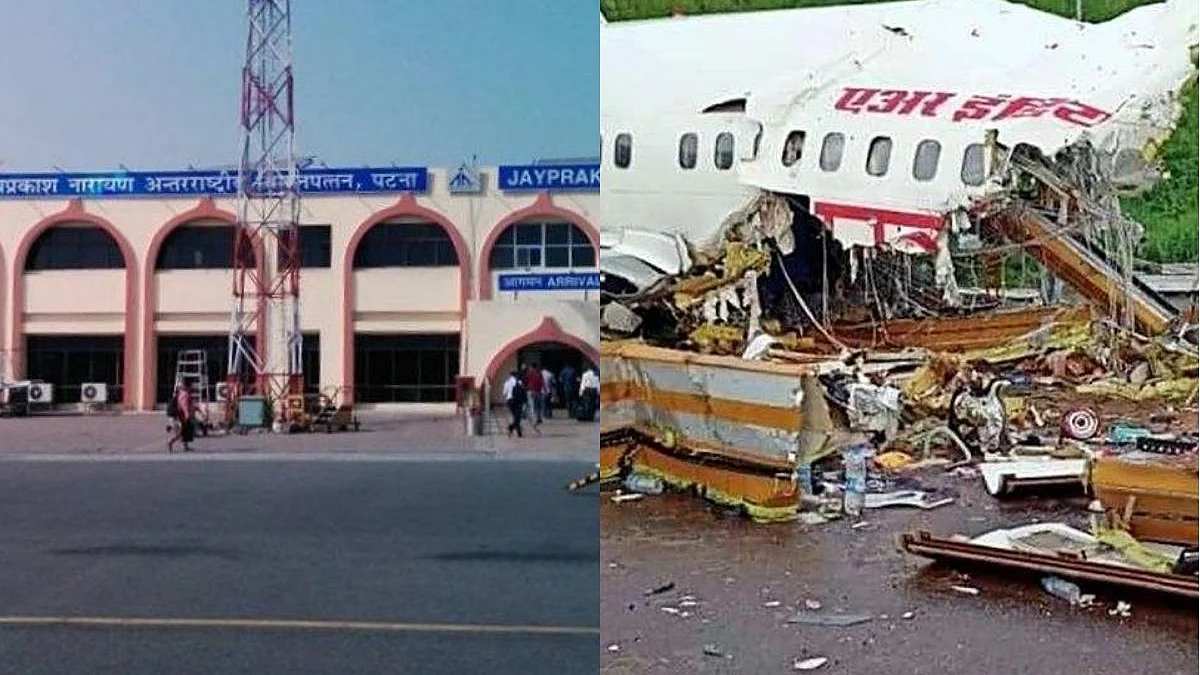In the backdrop of Kozhikode crash, Patna airport cries for attention
The Jaiprakash Narayan International Airport had hit the headlines on July 17, 2000 when more than 60 people were killed when a Delhi-bound Boeing 737 ploughed through a residential locality

The tragic air crash at Kozhikode, in which at least 18 people were killed, has triggered fresh hopes that the spotlight would be back on "risky" airports like the one in Patna which suffers from many deficiencies and has seen one of the major plane accidents in the country’s history two decades back.
The Jaiprakash Narayan International Airport, reckoned among the 20 busiest ones across the country, had hit the headlines on July 17, 2000 when more than 60 people were killed when a Delhi-bound Boeing 737 from Kolkata ploughed through a residential locality.
Prior to landing, the pilots sought permission for a 360 degree turn as they were "high on approach" but upon receiving clearance from the ATC, the plane "stalled shortly after commencing the 360 degree turn and crashed".
Those killed included 49 passengers, out of 52 on board, both pilots, all the four air hostesses and six local residents, who were crushed by the huge metal body running at high speed.
A court of inquiry was ordered and Admiral P Rajkumar had concluded in his report "the cause of the accident was loss of control of the aircraft due to human error (air crew)".
However, the report noted in its observations about the airport having a short runway, running into about 6500 feet, 2500 feet less than the one at Kozhikode even though it was not a "tabletop" like the one in Kerala.
The report said that it "sufficed" until the 1970s, when "only light aircraft were being operated from the airfield" but requirements changed when big commercial jets like Boeing 737 and Airbus 320 started running from the airport.
"The runway length was extended to its present dimension which was the maximum the airfield could accommodate" the report pointed out adding that it was causing "operational constraints".
Speaking on condition of anonymity, an aviation official said, "you just need to board a flight from somewhere to Patna and you will sense that something is amiss. Pilots have to brake violently and the judder can be felt by all passengers on board. Smooth landing is simply not possible".
He said "a lot of manoeuvring" is required by pilots, both while landing as well as take off since besides the short runway the airport also has the disadvantage of densely populated residential localities and commercial establishments at a short distance and the slightest undershooting or overshooting could have catastrophic consequences.
An old resident of Gardanibagh locality concurs.
"We cannot forget the sight on that day. We had heard about plane crashes, seen pictures of these in newspapers. But to behold the wreckage right in front of us, with residential quarters on road number 29 reduced to a rubble buried under metallic wreckage was something else.
"Till this day, we shudder and prayers come on our lips whenever we hear the roar of an aircraft, which was quite often since the airport is barely a kilometer and a half away", he said.
The aviation official, meanwhile, seems frustrated that the proposed shifting of the airport to Bihta, about 35 kms from the city, has been hanging fire.
"Given the topography of the city, the current location of the airport is not suited for air traffic. In addition to the acknowledged pitfalls of a short runway, flights here routinely suffer bird hits since markets dealing in meat, fish and poultry are situated not too far away, he added.
Follow us on: Facebook, Twitter, Google News, Instagram
Join our official telegram channel (@nationalherald) and stay updated with the latest headlines
